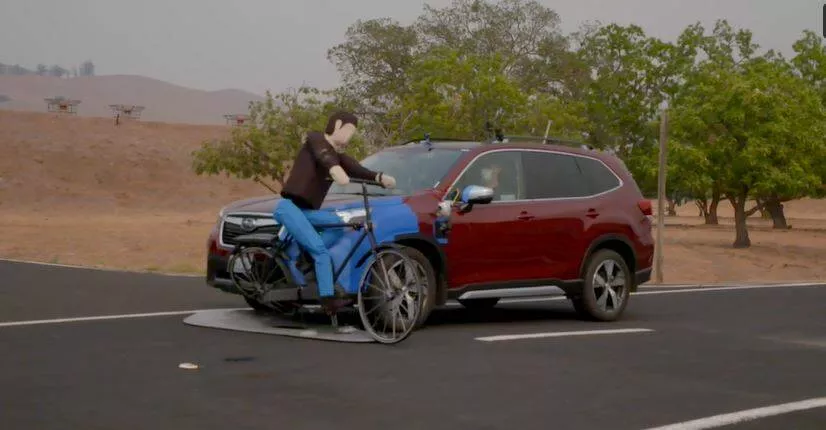Autonomous vehicle may be more distant than people think Tests of three leading systems found that they hit a third of cyclists and failed to avoid any oncoming cars The test conducted by the American Automobile Association (AAA) examined three vehicles: 2021 Hyundai Fe equipped with road driving assistance system, 2021 Subaru Forester equipped with eyesight, and 2020 Tesla Model 3 equipped with automatic driving.
According to AAA, all three systems represent the second of the five levels of automatic driving, which requires drivers to be vigilant at all times in order to seize control from the computer when needed. Generally speaking, there is no semi autonomous vehicle that can operate above the second level.
AAA examined a variety of situations: how active driving assistance (ADA) deals with slow cars or cyclists in front of them in the same lane, how to deal with traffic crossing the centerline, and how to deal with cyclists crossing their lane.

The first two scenarios evaluate adaptive cruise control (ACC), which can decelerate or brake the vehicle according to slow or stopped objects in front. All three vehicles have detected their vehicle and cyclist targets and can respond with speed or stop.
AAA said that their test of ACC system was encouraging, and also supported "the previous research conclusion of American Automobile Association that ACC components of ADA system are well developed and can perform according to the expected performance of typical closed scenes and natural driving environment".
Lack of ADA response in emergency situations
Controlling deceleration is one thing in the face of predictable situations, but it is much worse in the face of emergencies.
In the test involving oncoming cars entering the lane of vehicles supporting ADA, only one Tesla Model 3 detected the oncoming car and slowed it down, but still hit it.
To make matters worse, AAA pointed out that the head-on test was conducted at an unrealistically low speed, in which ADA vehicles were driving at 15 miles (24 kilometers) per hour, while the target vehicle was driving at 25 miles (40 kilometers) per hour.
"If the test is conducted at high speeds on rural two lane highways, the evaluated ADA system is unlikely to provide meaningful mitigation without driver intervention," AAA wrote in the report
Greg Brannon, director of automotive engineering at AAA, said the ACC test was encouraging, but the head-on test should be enough to stop the driver. "Frontal collision is the deadliest kind, and these systems should be optimized when they can provide the greatest help."
Relatively speaking, the reaction to a collision with a cyclist is more encouraging, but not so encouraging. In the five tests, not all three cars did not slow down and hit the cyclist, but only Subaru failed to detect and hit the cyclist.
In each scenario, the driver of ADA enabled vehicle reaches the predetermined speed, starts the system and allows the vehicle to hit or avoid its target, rather than adopting any deceleration, parking or steering strategy. Both cyclists and vehicles have lightweight goals and are designed to be harmless to test vehicles and drivers.
AAA concludes from its work that the ADA system cannot operate without continuous driver supervision, contrary to what it calls misleading marketing materials from carmakers. The agency pointed out that a survey it conducted in 2018 found that 40% of consumers believed that names such as autopilot meant that the vehicle could drive completely automatically.
AAA said auto manufacturers engaged in research on autonomous driving technology need to spend more time paying attention to emergencies in marginal situations and adopting active driving monitoring systems to ensure drivers' attention.
On the one hand, driving assistant software is just a tool, which needs dedicated human drivers, and should not be used or relied on as a real auto drive system; On the other hand, the poor performance of the secondary driving system should not be used as an indicator of higher-level safety performance. Complicating this problem is that some marketing around driving assistance technology has portrayed it as a qualified solution without hands-on.
"Drivers tell us they want their current driving assistance technology to be implemented safely all the time. Unfortunately, our tests show that performance instability is the norm, not the exception," Brannon said.